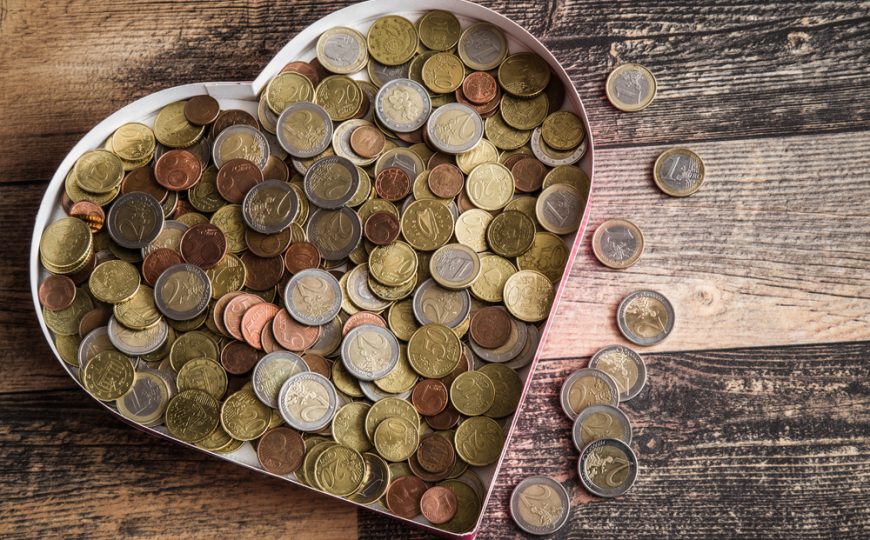No this is not a post about the importance of teaching children fiscal responsibility (although that is important). In this post I am continuing the conversation on showing love and am referring to the emotional bank account.
Many of you may have already heard of the idea of an emotional bank account. Perhaps most popularized by well-known educator and advocate for the child with learning disability, Rick Lavoie in his talk on self-esteem. In this video he urges you to give your child poker chips by looking to set up opportunities for the child to do right and then noticing he did so with compliments and by performing acts of love for him (see YouTube “When The Chips Are Down – Poker Chips”).
Dr. Gary Chapman in his Five Love Languages model gives us 5 different ways to show love:
- Acts of service – lovingly doing something for the person
- Affirmations – verbally acknowledging appreciation
- Gifts – a physical object you give that is an extra not a necessity but is best if it shows your understanding of what the recipient likes.
- Quality time – a listening ear with undivided attention.
- Touch – this includes hugs, kisses, a pat on the back, high five, etc.
I would like to suggest that this list is comprehensive but not complete. A person may also feel love if you give …
6. Alone time – absolve them of any responsibilities for a defined period of time so that they can spend time with themselves. This gives the person a chance to read, paint, go for a jog, have ice cream with a friend. It does not matter what they do with their time, the point here is you are giving, as opposed to their forcefully taking this time (perhaps by shirking responsibility). This differs from quality time in that you are not spending the time with the recipient of your love.
7. Respect – speak and act towards the person with the respect you would give someone whose opinion you value and you would like to impress. This would include giving a child a choice in what they wear, even if you don’t give complete autonomy.
8. A second chance – this one obviously has to be used judiciously. You don’t give someone a second chance to do something life threatening. But think for a moment how loving it is to give someone the message, “I know this was just a mistake, I know you are better than this, I believe in you and will let you try again.”
Doing any of the above 8 can fill an emotional bank account. But by how much? An act of love may speak more than one language. For example, giving a voucher for a professional massage gifts a physical object, alone time and touch. Fist bumping a “sensory person” instead of hugging them shows respect and thus creates a deposit. In this situation had you shown love in the currency you prefer, giving the hug, you would have been making a withdrawal.
![]() Different people have different perceptions and attach different meanings to things. For one person if you make me breakfast you love me, for another person that same breakfast makes you a controlling person trying to make me do something I don’t want to do, eat breakfast. I thought the ATM acronym, taught to me by Dr. Miriam Adahan, a delightful tool.
Different people have different perceptions and attach different meanings to things. For one person if you make me breakfast you love me, for another person that same breakfast makes you a controlling person trying to make me do something I don’t want to do, eat breakfast. I thought the ATM acronym, taught to me by Dr. Miriam Adahan, a delightful tool.
![]() How a person interprets your act is an ATM – And That Means. Your intentions are important too. Preparing that breakfast with resentment that you couldn’t sleep longer because you “had to” prepare breakfast does not fill an emotional bank account as generously as doing the act lovingly. However, even if you do it lovingly, if the ATM of breakfast for that person is “my mom/spouse thinks I need to be on a diet” or “my dad thinks I can’t take care of myself” you are making a withdrawal not a deposit!
How a person interprets your act is an ATM – And That Means. Your intentions are important too. Preparing that breakfast with resentment that you couldn’t sleep longer because you “had to” prepare breakfast does not fill an emotional bank account as generously as doing the act lovingly. However, even if you do it lovingly, if the ATM of breakfast for that person is “my mom/spouse thinks I need to be on a diet” or “my dad thinks I can’t take care of myself” you are making a withdrawal not a deposit!
Love by definition is giving. As soon as you take it is no longer love. Therefore love will create a deposit and taking will create a withdrawal. It may look like an act of love, but the ATM is what will define what it ultimately ends up being, both your ATM and the recipient’s. Suppose you see someone you like and want to let them know you like them so they feel good, so you reach out to hug them and they shrink back or flinch. I have seen the “giver” get insulted by such a response, taking it as a personal rejection. The true giver, the one looking to make a deposit, will adjust and perhaps switch to a one hand shoulder squeeze or just a big smile and warm greeting. This giver will watch to confirm they have made a deposit as intended. Whereas the “giver” who was trying to take, increases their withdrawal with the follow-up negative response, whether a tirade or snubbing of their intended recipient. If you want to successfully engage in commerce in Venezuela, you would want to find out before your trip what currency they use and how the American Dollar transfers. It is precisely because this is not so easy that the Euro was developed, creating a common currency for the countries of Europe.
![]() Check the exchange rate for your love currency.
Check the exchange rate for your love currency.
Best,
![]()




It’s hard to come by experienced people in this particular topic, however, you seem like you know what you’re talking about!
Thanks.
There is definately a lot to know about this topic. I really like
all the points you have made.
I pay a quick visit day-to-day to a few blogs and blogs to read content, and this weblog gives quality based articles.